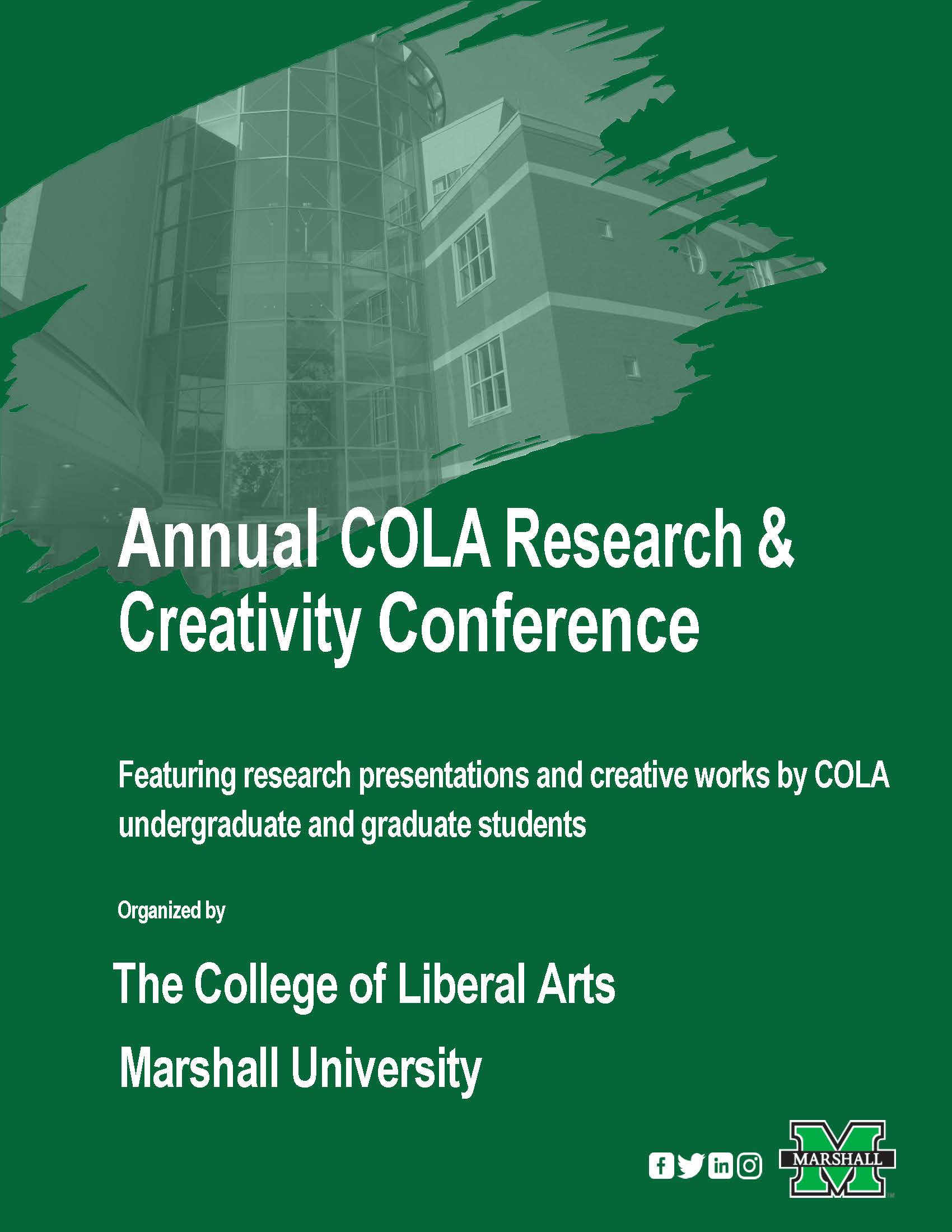Document Type
Poster Presentation
Start Date
20-4-2017 2:00 PM
End Date
20-4-2017 3:00 PM
Keywords
gender, race, nonverbal behavior, psychology
Biography
My name is Alicia Pelfrey, and I am a sophomore in the Honors College at Marshall University. I am a psychology major with minor in Spanish and photography. After earning a bachelors in psychology, I plan to pursue a doctorate in social psychology and eventually teach at a university.
Major
Psychology
Advisor for this project
Dawn M. Goel
Abstract
When individuals interact in a public setting, non-verbal behavior may demonstrate preferences or biases toward others. For example, research suggests that women only need to flash a smile to appear non-threatening to others in public settings (Hall, 1993). Furthermore, Blacks may experience prejudice through non-verbal behavior in interracial interactions (Dovidio, Kawakani, & Gaertner, 2002). The present research sought to investigate non-verbal behavior in terms of gender and race. Specifically, 120 individuals were observed as they stood in line at various locations in Huntington, West Virginia. The distance between individuals was estimated and recorded. There were two hypotheses for the present research. First, it was predicted that individuals would stand closer to those who were moderately similar in terms of gender than those who were completely similar in terms of gender and race, moderately similar in terms of race, and completely dissimilar. Second, it was predicted that individuals would stand closer to a Caucasian woman than a Caucasian man, Non-Caucasian woman, and non-Caucasian man. The hypotheses were not supported; however, the second hypothesis trended towards significance. In the future, researchers working to observe the effects of non-verbal behavior should select areas with large, diverse populations with many people coming and going. This study opens new avenues for future research, especially in terms of how implicit biases may impact instant reactions and non-verbal behavior.
How Big is Your Bubble? Effects of Race and Gender on Personal Space
When individuals interact in a public setting, non-verbal behavior may demonstrate preferences or biases toward others. For example, research suggests that women only need to flash a smile to appear non-threatening to others in public settings (Hall, 1993). Furthermore, Blacks may experience prejudice through non-verbal behavior in interracial interactions (Dovidio, Kawakani, & Gaertner, 2002). The present research sought to investigate non-verbal behavior in terms of gender and race. Specifically, 120 individuals were observed as they stood in line at various locations in Huntington, West Virginia. The distance between individuals was estimated and recorded. There were two hypotheses for the present research. First, it was predicted that individuals would stand closer to those who were moderately similar in terms of gender than those who were completely similar in terms of gender and race, moderately similar in terms of race, and completely dissimilar. Second, it was predicted that individuals would stand closer to a Caucasian woman than a Caucasian man, Non-Caucasian woman, and non-Caucasian man. The hypotheses were not supported; however, the second hypothesis trended towards significance. In the future, researchers working to observe the effects of non-verbal behavior should select areas with large, diverse populations with many people coming and going. This study opens new avenues for future research, especially in terms of how implicit biases may impact instant reactions and non-verbal behavior.




